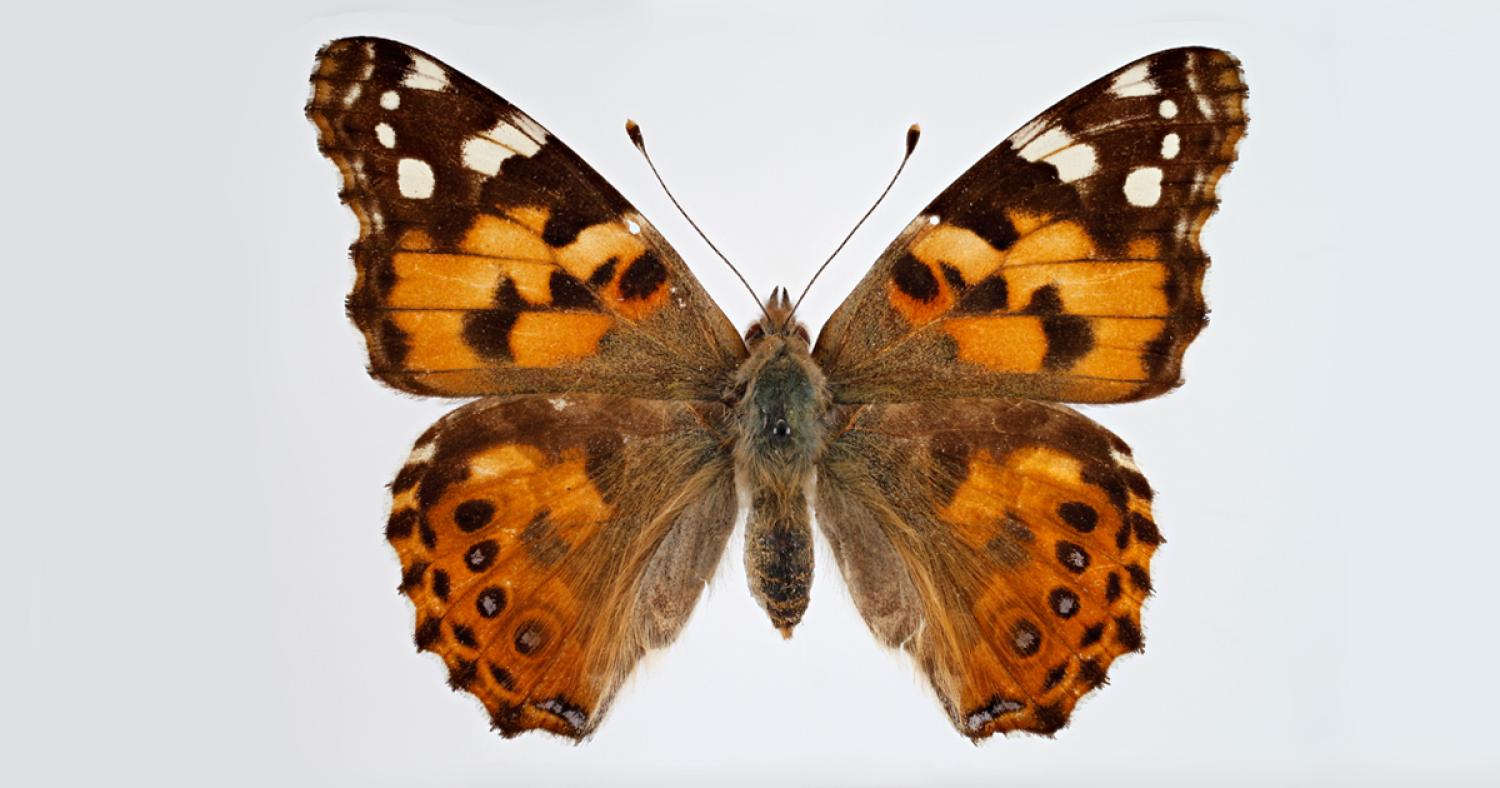The CU Museum is closed. We will be reopening soon.
During this time, collection visits will be available by appointment and other special access requests will be considered on a case-by-case basis.
Please email cumuseum@colorado.edu for more information.
Painted Lady Butterfly
The Painted Lady Butterfly is the most widespread butterfly species found on the planet, occupying all continents except Antarctica and Australia! Painted Ladies belong in the family Nymphalidae, which are characterized by having reduced forelimbs covered in sensory hairs. These sensory hairs help adult butterflies navigate their environment: e.g. choosing appropriate hostplants on which to lay their eggs. Painted Lady caterpillars are generalist herbivores, feeding on over 300 hostplants including thistle, mallows, hollyhock, and asters. Some of these hostplants contain toxic compounds which Painted Lady caterpillars are able to store in their hemolymph (blood), which makes them unpalatable to potential predators.
Painted Lady butterflies are best known for their impressive migrations, which unlike many other migratory species, do not follow a seasonal pattern. Some hypothesize that their migratory patterns are influenced by heavy rains like El Niño, which may impact the abundance of their larval hostplants. In North America, we usually see Painted Lady butterflies migrating in the northwestern direction during Spring and sometimes we can see a second migration back southward during Autumn. Like Monarch butterflies, Painted Lady migrations span over the course of multiple generations; it takes about 6 generations for the Painted Lady’s round trip journey from Mexico to Canada and back. During the mid- to late- springtime in Colorado we can often see these butterflies flying relatively low to the ground in large numbers as they migrate through, searching for nectar and hostplants. Just a few years ago, a Denver Weather radar detected a 70-mile wide swarm of these butterflies migrating in the fall, but they were headed the wrong way! These butterflies were not migrating southward, as to be expected, but instead they were drifting with the wind in a northward direction. The Painted Lady may be abundant, but it is truly unique in both its striking orange patterns and migratory behavior.
Common name: Painted Lady Butterfly
Scientific name: Vanessa cardui (Family: Nymphalidae)
Catalog number: UCMC 0197176 (female)
Label data: Boulder, Colorado; June 12, 1949; Donald Eff
Vandenbosch, Robert. 2003. Fluctuations of Vanessa cardui butterfly abundance with El Nino and Pacific Decadal Oscillation climatic variables. Global Change Biology 9: 795-790.
Tilden, J.W. 1962. General characteristics of the movement of Vanessa cardui (L.). Journal of Research on the Lepidoptera 1: 43-249.
Shields, Oakley. 1993. World Distribution of the Vanessa cardui Group (Nymphalidae). Journal of the Lepidopterist’s Society 46(3): 235-238.
Feeny, P., Rosenberry, L., & M. Carter. 1983. Chemical aspects of oviposition behavior in butterflies. In “Herbivorous Insects: Host-Seeking Behavior and Mechanisms”, pp.27-76. Academic Press, New York.
Erlich, Paul R. The Morphology, Phylogeny and Higher Classification of the Butterflies (Lepidoptera: Papilionoidea) [dissertation]. [Kansas]: University of Kansas; 1957. 162 p.


